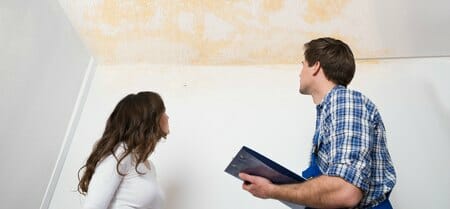Just how do you really feel in relation to Most Common Causes of Leaky Pipes?

Leaks not just create waste of water yet can also trigger unneeded damages to your house and also advertise undesirable organic growth. Sadly, water leaks could go unnoticed since a lot of the pipework in our house is hidden. By understanding and also looking for day-to-day scenarios that cause leaks, you can protect your residence from future leakages and unnecessary damages. Today, we will certainly take a look at six leakage triggers that might be triggering your pipelines to leak.
Intruding origins
A lot of water leakages begin outside the home rather than inside it. You could notice wet patches or sinkholes in your lawn, as well as that may imply that tree roots are invading water lines causing water to leak out.
Corroded water supply
This may be the cause of discoloration or bending on your water pipelines. If our plumbing system is old, think about changing the pipes since they are at a greater risk of rust than the more recent designs.
Malfunctioning Pipeline Joints
Pipe joints can deteriorate over time, resulting in water leakages. If you have loud pipelines that make ticking or banging sounds, particularly when the hot water is transformed on, your pipe joints are most likely under a lot of stress.
Instant temperature changes.
Severe temperature modifications in our pipelines can cause them to broaden as well as get unexpectedly. This growth and contraction may create splits in the pipelines, particularly if the temperature are below cold.
Poor Water Connectors
At times, a leak can be brought on by loosened pipes and pipes that provide your appliances. Most of the time, moving is what creates the loosened water Links. You may discover when it comes to a cleaning equipment, a hose might spring a leak because of drinking throughout the spin cycle. In case of a water connections leakage, you may see water running directly from the supply line or puddles around your home appliances.
Clogged Drains
Blocked drains pipes could be aggravating and also inconveniencing, yet they can often end up creating an overflow leading to rupture pipes. Maintain getting rid of any kind of products that may decrease your drains that could obstruct them to stay clear of such hassles.
All the above are reasons for leaks but not all water leaks result from plumbing leakages; some leakages may come from roofing system leaks. All leakages must be repaired instantly to avoid water damages.
Leaks not only create waste of water however can also create unnecessary damages to your house and also promote unwanted natural development. By looking and understanding for everyday scenarios that trigger leaks, you can protect your residence from future leaks as well as unnecessary damages. Today, we will look at six leakage causes that may be triggering your pipes to trickle.
At times, a leakage can be caused by loosened pipes and pipelines that supply your appliances. In instance of a water connections leakage, you might see water running straight from the supply line or pools around your home appliances.
How To Check For Water Leak In Your Home
How To Check for Leaks
The average household's leaks can account for nearly 10,000 gallons of water wasted every year and ten percent of homes have leaks that waste 90 gallons or more per day. Common types of leaks found in the home are worn toilet flappers, dripping faucets, and other leaking valves. These types of leaks are often easy to fix, requiring only a few tools and hardware that can pay for themselves in water savings. Fixing easily corrected household water leaks can save homeowners about 10 percent on their water bills.
To check for leaks in your home, you first need to determine whether you're wasting water and then identify the source of the leak. Here are some tips for finding leaks:
Take a look at your water usage during a colder month, such as January or February. If a family of four exceeds 12,000 gallons per month, there are serious leaks.
Check your water meter before and after a two-hour period when no water is being used. If the meter changes at all, you probably have a leak.
Identify toilet leaks by placing a drop of food coloring in the toilet tank. If any color shows up in the bowl after 10 minutes, you have a leak. (Be sure to flush immediately after the experiment to avoid staining the tank.)
Examine faucet gaskets and pipe fittings for any water on the outside of the pipe to check for surface leaks.
Undetected water leaks can happen without the home or business owner even realizing. If you suspect a water leak, but not able to find the source. It is time to contact a professional water leak detection service, The Leak Doctor.
How To Find a Water Leak In Your Home
https://www.leakdoctor.com/blog/How-To-Check-For-Water-Leak-In-Your-Home_AE197.html
/GettyImages-957479686-f3d2e677f2e749fc98aa207b474c5c1f.jpg)
I was guided to that editorial on How to detect water leaks in your home from an acquaintance on a different site. Liked our post? Please share it. Let someone else find it. I recognize the value of reading our article about Most Common Causes of Leaky Pipes.
Save time, dial!